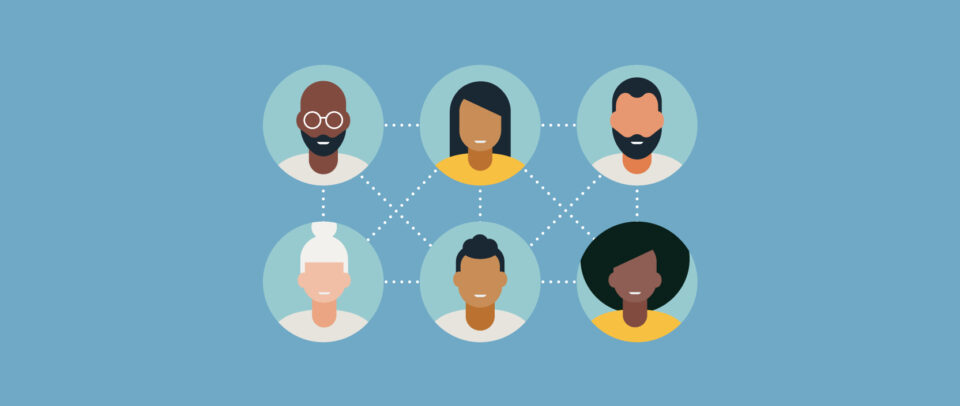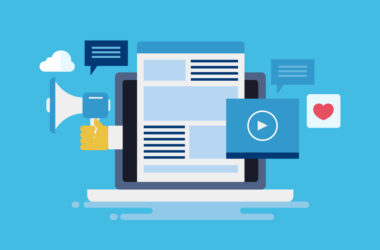Socially Responsible Designers: 6 Actions for Inclusive Design
Microsoft Word wanted to autocorrect “responsible design” to “responsive design.” Let that sit for a minute. The program was confused. And the truth is, so are many web designers.
Galvanized by movements to expand inclusivity and more accurate audience representation, design teams and developers increasingly seek diverse perspectives to build inclusive experiences for a more diverse audience. Even if you’ve considered yourself a longtime responsible designer, you should actively seek new perspectives in order to ensure you’re upholding the principle of inclusivity.
Reaching back to 1986, the words of Ferris Bueller seem pretty prophetic right about now:
“Life moves pretty fast. If you don’t stop and look around once in a while, you could miss it.”
What you thought you knew about your customers yesterday could be different today. Looking around is important for creating genuinely inclusive and responsible web design, but how can you better implement inclusive design principles?
What Is Inclusive Design?
Many agencies talk about inclusion. But too many designers stop after a superficial effort to include more diverse images in their ads. Truly getting at the voice of the customer, doing more than checking boxes, and genuinely putting in the effort to shift your point of view – that’s what inclusive design is all about.
To get your head around inclusive design, it’s critical to begin with admitting that exclusive design does exist. Exclusive design is what happens when creative minds ignore their own inherent bias. Inclusive design begins with this acknowledgment and the process of seeking out those exclusions and reframing them as opportunities to create new and inclusive designs. It’s driven by ethical behavior, responsible decision-making, and a relentless commitment to awareness.
How to Implement Inclusive Design Principles
To be sure you are designing inclusive and easy-to-use websites, a great place to start, of course, is with Web Content Accessibility Guidelines (WCAG). The accessibility compliance scanner offered by WCAG reviews your website and checks for compliance with the latest accessibility guidelines, as defined by the Web Accessibility Initiative.
Although that checklist helps ensure accessibility basics, creating a site that’s inclusive to your audience takes a comprehensive approach. Below are six actionable strategies to ensure you’re tackling responsible and inclusive web design in a comprehensive and sincere manner.
1. Diversify Your Team
Look around. Have you built a team of people who think, look, speak, and live in very similar ways?
Homogeneous teams are all too common and can produce designs that are unintentionally exclusive or narrow-minded. On the other hand, diverse teams with diverse life experiences tend to be more creative and inclusive. Identify which perspectives could benefit your team and your web design. Then go seek out and hire those people.
2. Understand Inherent Personal Bias
It was tempting to label this section “Acknowledge Inherent Personal Bias.” But because so many designers will automatically say they possess zero bias, the first step is understanding what inherent bias is. Having inherent bias doesn’t mean you’re a terrible person. Everyone has it.
Why?
Because we’ve grown up with a particular group of people in a certain place. We have a certain level of ability, disability, advantage, or disadvantage. We have coworkers, mentors, and other relationships that develop these inherent points of view, contributing to inherent bias.
Web design has to satisfy consumer needs that are constantly evolving. And if you don’t understand and acknowledge your own inherent bias, you risk alienating certain groups of people with your web design. Check yourself about who you’re reaching out to for design guidance. Push yourself to check in with those who have a different perspective.
What you read, watch, and listen to also inform inherent bias. Diversifying these inputs by exposing yourself to people with a range of backgrounds, personalities, and identities will broaden your empathy, understanding, and ability to implement responsible design. When we eliminate familiar routines, we learn the most.
3. Know Your Audience
A highly skilled designer knows their audience almost better than the audience knows themselves. But a truly evolved and responsible designer realizes there is always more to learn. They approach audience understanding with a growth mindset rather than a fixed mindset. What new goals, problems, and pain points do your customers have? Strive to reach your entire audience.
4. Incorporate Inclusive, Customizable Experiences from the Start
Not only are you visualizing your products and services being used by more people, but you’re adapting those products and services to reflect what today’s population looks like. Think of this analogy. A builder of physical structures would previously have thought inclusivity meant building a wheelchair ramp when designing a structure. But a genuinely inclusive designer creates the entrance without barriers at all in the first place. The same is valid with inclusive and responsible web design.
It’s hard to build something that can be all things to all people. So, in order to be more inclusive, designers are looking for ways to introduce alternate formats in which the audience can enjoy an experience. For example, color blind and dark modes.
Not all that different from what designers have done historically with book formats and cover styles, we’re simply seeing the demand for customizable experiences become more important from the audience point of view. Designers must adapt by addressing and prioritizing this demand as a primary element of digital experience design.
5. Be Consistent
By incorporating a consistently inclusive design, your leads and customers begin to recognize your efforts. For example, on your website, create icons that are easily recognizable and related to distinct functionality. This way, people who struggle with language barriers can easily infer the purpose of each button they see.
By building patterns that are both inherently consistent and consistent with other external experiences, designers improve inclusivity simply by not requiring someone to process new things at every stage. When it comes to icons, that might mean not using a shopping cart, a shopping bag, a shopping basket, and a cash register in different places for your cart experience.
6. Broaden Your Definition of “Average”
Web designers often imagine an “average” or “target” user. This imaginary person is a mathematical average of the most common users and is typically quite involved in various decision-making processes, including design choices. A truly evolved designer looks for inspiration about their audience in the most unique of places.
HBO’s Billions, a show about hyper-masculine hedge funds, introduced a non-binary character who greets coworkers by saying, “Hello, I’m Taylor. My pronouns are ‘they’, ‘theirs’ and ‘them’.” The show’s creators understand that gender is no longer solely defined by male and female. Including options for transgender and non-binary individuals opens the experience to a fuller audience.
Look at less-common cases, not only the most common. Consider how you can widen the inputs for all of the following activities:
- Project briefs
- Research
- User interviews
- Testing
- Analysis
An inclusive design approach means that designers broaden how they define the “target” user. This includes moving away from the acceptance of mathematical averages when talking about human beings.
Acknowledge the Power of Inclusive Design
Web designers have enormous power as technology becomes an increasingly present and necessary component in our everyday lives. And with that kind of power comes an elevated degree of responsibility.
Of course, web designers will still want to offer users the best experience possible. Great design has always considered accessibility in some way. But today’s designers should always be considering use cases they hadn’t considered before in order to achieve the goal of inclusive design.
Media Temple has long been a promoter of the creative and agency community through our Agency Partner Program. As you explore the constantly evolving world of building for the web, please reach out about ways we can support you. Learn more about inclusive web design by watching Web Design Trends for 2021: Creative Leaders on Shifts in the Design World.




